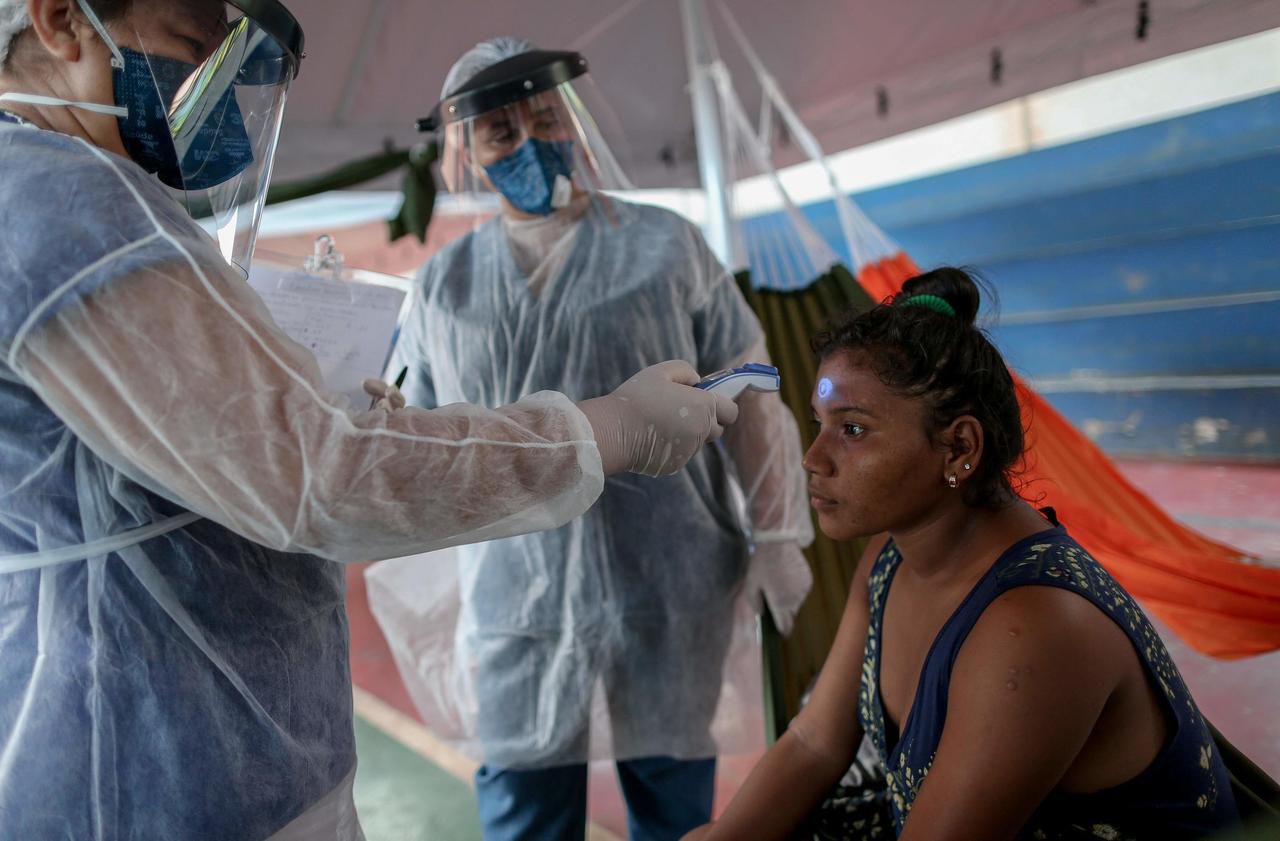A record number of deaths in 24 hours for the third consecutive day, an acting Minister of Health for almost three weeks, a president who hammered his opposition to containment measures ... The health situation in Brazil worries many observers, who consider the country as the future "epidemiological bomb" of the planet.
The Latin American country, now considered by the World Health Organization as the epicenter of the epidemic, has been affected like all the others by the coronavirus. But the epidemiological situation is particularly critical there. Here are three infographics to understand why.
Always ascending curve
The number of deaths officially recorded in hospitals, places of care and retirement homes is not the perfect indicator because it depends on the counting method specific to each country. However, it still gives an idea of the evolution of the epidemic in a state.
When we compare the trend in Brazil with that in the other five main affected countries, we see that the curve of the total number of deaths is the only one whose slope increases day after day. Between Sunday, May 31 and Thursday, June 4, the number of deaths in 24 hours was each time higher than that recorded the day before.
Thursday June 4, 1473 dead were indeed counted in 24 hours, increasing the total toll to 34 021 victims. The record was broken for the third day in a row, after 1,349 deaths on Wednesday and 1,262 on Tuesday, according to figures from the Ministry of Health. The balance sheet, however, fell to 1005 deaths in 24 hours Friday, but it will be necessary to wait at least several days in order to know if the trend starts again downwards.
Regarding the number of new positive cases detected in 24 hours, it exceeded 30,000 this Friday, for the third time only.
Newsletter - The essentials of the news
Every morning, the news seen by Le ParisienI'm registering
Your email address is collected by Le Parisien to allow you to receive our news and commercial offers. Find out more
"The number of reproduction R [the number of people that an infected individual will contaminate, note] is decreasing a little but it remains above 1, at 1.12 this Thursday. The country is still growing exponentially, ”says epidemiologist Antoine Flahault, professor of public health at the University of Geneva, in Paris. For an epidemic to brake, this number must drop below the value 1.
In the absence of confinement imposed by the State, the country can hope to count on the progressive immunity of a part of its population, whether it is “crossed” (linked to previous infections) or produced by this coronavirus.
Mortality for a million inhabitants rather low
If we relate the number of deaths to the population, Brazil is only fourteenth with 162 deaths per million inhabitants (excluding micro-states with a very small population, such as San Marino and Andorra). Far ahead are the major European countries, with Belgium in the lead.
But watch out for bias. Because this is explained in particular by the very large and young population of Brazil, which has nearly 210 million inhabitants. The median age (half is below, the other is above) is 32 years, against 41 years in France. The country also has only 9% of people aged 65 and over, the most vulnerable to the virus, compared to 16% in the United States, 20% in France and 23% in Italy, according to United Nations figures. dating from 2019.
Brazil also comes far behind when the number of positive cases (over 600,000) is reported to the population. This could be explained in particular by less intense screening than in other developed countries.
The center of the country rather spared
When we look at the mortality map according to the 26 states of Brazil, we observe that the center of the country, less populated, is rather spared compared to the North and the East coast. "At first, the threat seemed to us quite distant because the very affected Brazilian cities were far from the border, but the pandemic is spreading and it is now hitting the country hard to Belem and Macapá (two large cities located north of Brazil). There is a very big concern, told us at the end of May the senator of Guyana Georges Patient, present on the spot.
As for the south of the country, which experiences the southern winter period from June to September, it will not benefit from the possible beneficial effect of the summer season on the virus. Conversely, the results of a study published on May 22 in the journal Science "suggest that autumn and winter are seasons more conducive to a significant upsurge in the number of cases".
The state of São Paulo is the most affected, with 8,560 deaths and 129,200 cases confirmed this June 4. But it is also the one with the most inhabitants, by far (almost 45 million). Like those of many other states, its governor has nevertheless taken containment measures, against the advice of President Jair Bolsonaro who prefers to minimize the situation.
At its peak, Brazil "seems to have no leaders who take the scale of the epidemic seriously enough," said Antoine Flahault, in unison with many other observers.
VIDEO. Coronavirus in Brazil: Faced with the progression of the epidemic, Bolsonaro's strategy divides the country

